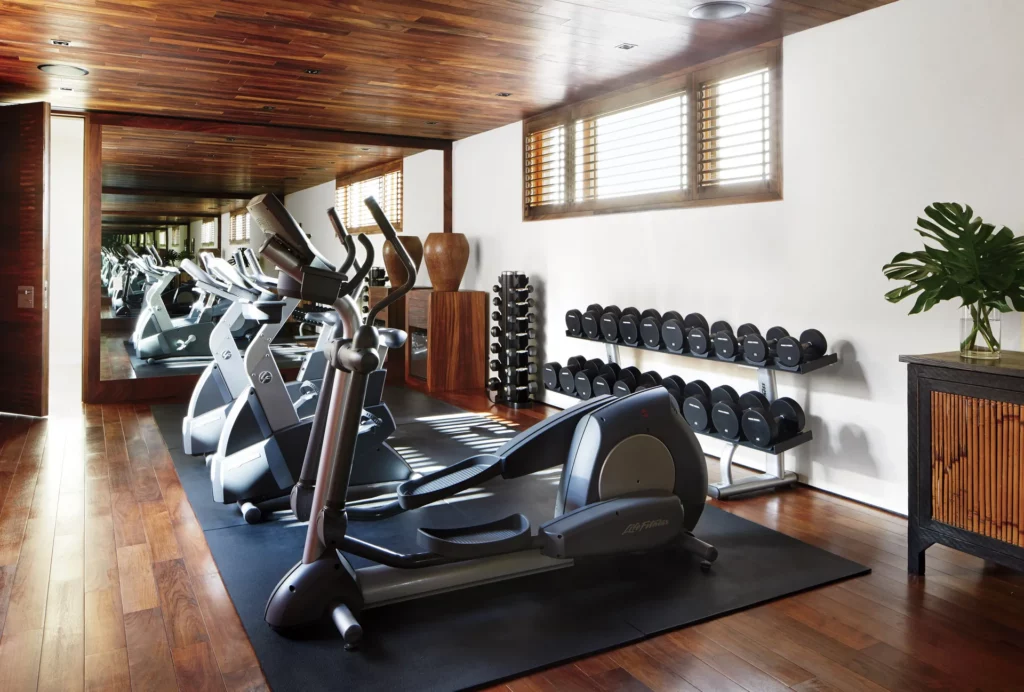Creating a Home Gym: Design and Layout for Fitness Enthusiasts
Setting up a home gym is a fantastic way to stay fit and healthy without the hassle of commuting to a fitness center. With a well-designed and functional home gym, you can create a motivating environment that meets your fitness needs and helps you achieve your goals. In this guide, we’ll explore the essential steps and considerations for designing and laying out a home gym that inspires you to work out regularly.
Benefits of a Home Gym
Before diving into the design and layout, it’s important to understand the benefits of having a home gym:
- Convenience: A home gym eliminates the need for travel, saving you time and making it easier to incorporate fitness into your daily routine.
- Cost-Effective: While the initial setup might require an investment, a home gym can save you money in the long run by eliminating gym membership fees.
- Privacy: Working out in your own space provides privacy and comfort, allowing you to exercise without any self-consciousness.
- Customization: You can tailor your home gym to fit your specific needs, preferences, and fitness goals.
Choosing the Right Space
The first step in creating a home gym is selecting the right space. Here are some factors to consider:
1. Size and Location
- Size: Assess the amount of space available. A spare room, basement, garage, or even a corner of a larger room can work. Ensure there’s enough room for equipment and for you to move around comfortably.
- Location: Choose a location that is easily accessible and has good ventilation. Natural light can also make the space more inviting and energizing.
2. Flooring
The right flooring is crucial for safety and comfort. Consider these options:
- Rubber Flooring: Durable, shock-absorbent, and easy to clean, rubber flooring is ideal for high-impact exercises and weightlifting.
- Foam Tiles: These provide cushioning for activities like yoga and Pilates. They’re also easy to install and replace.
- Carpet: While it offers some cushioning, carpet isn’t ideal for intense workouts due to its lack of support and difficulty in cleaning.

Essential Equipment
The equipment you choose should align with your fitness goals. Here are some must-have items for a well-rounded home gym:
1. Cardio Equipment
Cardio is essential for heart health and overall fitness. Consider these options:
- Treadmill: Great for running or walking, a treadmill is a versatile piece of equipment.
- Stationary Bike: Ideal for low-impact cardio workouts.
- Elliptical Trainer: Provides a full-body workout with minimal joint impact.
2. Strength Training Equipment
Strength training builds muscle, improves metabolism, and enhances bone density. Essential equipment includes:
- Dumbbells: A set of adjustable dumbbells saves space and offers a range of weights.
- Barbells and Weight Plates: For more advanced strength training.
- Resistance Bands: Versatile and portable, resistance bands are great for various exercises.
- Kettlebells: Excellent for dynamic movements and full-body workouts.
3. Functional Training Equipment
Functional training improves overall strength and coordination. Consider these items:
- Pull-Up Bar: Perfect for upper body strength exercises.
- Medicine Ball: Great for core workouts and functional training.
- Jump Rope: An effective and inexpensive cardio tool.
4. Recovery and Accessories
Recovery is a vital part of any fitness routine. Equip your home gym with:
- Yoga Mat: For stretching, yoga, and floor exercises.
- Foam Roller: Helps with muscle recovery and flexibility.
- Mirror: A full-length mirror helps you monitor your form and progress.
Designing the Layout
The layout of your home gym should maximize space and ensure a safe, efficient workout environment. Here are some tips:
1. Plan the Flow
Arrange equipment in a way that allows for smooth transitions between exercises. Group similar equipment together and create distinct zones for different types of workouts, such as a cardio area, strength training area, and stretching/recovery area.
2. Safety First
Ensure there’s enough space around each piece of equipment to prevent accidents and allow for full range of motion. Secure heavy equipment to the floor or walls if necessary to prevent tipping.
3. Storage Solutions
Keep your home gym organized with smart storage solutions. Use shelves, racks, and bins to store smaller equipment like dumbbells, resistance bands, and yoga mats. Wall-mounted racks are great for keeping weights and bars off the floor.
4. Personal Touches
Add personal touches to make your home gym more motivating and enjoyable. Consider these ideas:
- Music System: A good sound system or portable speaker can keep you energized during workouts.
- TV or Tablet Stand: Watching workout videos or streaming your favorite shows can make exercise more enjoyable.
- Inspiring Decor: Motivational quotes, posters, and bright colors can boost your mood and motivation.
Conclusion
Creating a home gym is a rewarding investment in your health and well-being. By choosing the right space, selecting essential equipment, and designing an efficient layout, you can create a motivating and functional workout environment. Remember to set clear goals, track your progress, and personalize your space to keep yourself motivated. With dedication and consistency, your home gym can become a key component of your fitness journey.
Ready to transform your home? Click here to schedule a free consultation with us today and let’s turn your dream home into a reality!

Follow our socials to get the latest updates or WhatsApp us to get to know about our services!